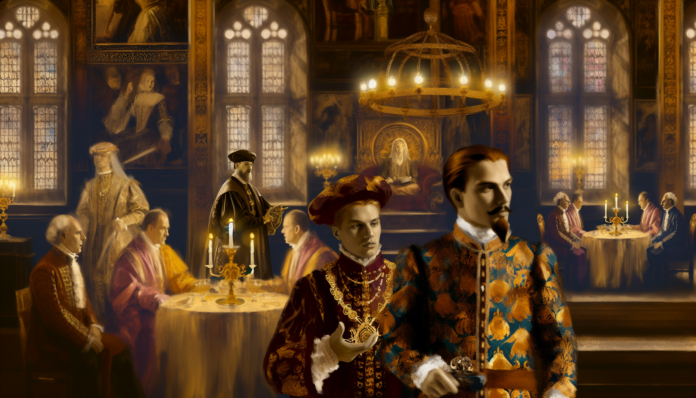Introduction
Royal families have long been enshrined in fairy tales, but behind the gilded facades lie scandals that could rival the most thrilling dramas. One of the most notable existences of scandalous affairs was the love life of King Henry VIII of England, whose notorious relationships were not just matters of the heart; they had deadly consequences for many. Living in the 16th century, during the height of Tudor rule, the prevailing moral attitude was dominated by strict religious doctrines and patriarchal norms. Love was often secondary to politics, power, and alliances, making Henry’s affairs all the more taboo.
The Scandal
Henry VIII’s reign (1509-1547) was punctuated by a series of tumultuous relationships, but his affection for Anne Boleyn was perhaps the most scandalous. Henry fell head over heels for Anne in the early 1520s, a time when he was still married to Catherine of Aragon. Despite his initial fervor for Catherine, the desire for a male heir—and Anne’s undeniable charm—drove Henry down a path that would shape English history.
In pursuit of Anne, Henry sought an annulment from Catherine. The pope refused him, which ultimately led to England’s break from the Catholic Church in 1534 and the establishment of the Church of England, allowing Henry to marry Anne. Their marriage, however, was rife with politics and danger. Anne soon grew unpopular, and rumors swirled about her alleged infidelities and witchcraft.
The most shocking moment came in 1536 when Anne was arrested and accused of treason, adultery, and incest—a quick trial culminated in her beheading. Henry’s obsession with her, tragically, transformed into a death sentence. This tumultuous affair contributed to a broader narrative where personal desires unleashed horrific consequences.
Reactions
The reactions to these events were mixed. Some viewed Henry’s actions as a grievous injustice, a romantic tragedy shaded in blood; others saw it as a necessary act to secure the throne. Chroniclers of the time, like Thomas More, expressed outrage, while pamphlets sensationalizing the affair fueled public intrigue.
“Neither God nor man could forgive her,” noted the chronicler Edward Hall, highlighting the prevailing sentiment against Anne’s alleged sins—a sentiment that would echo throughout history.
Moral and Cultural Analysis
The consequences of Henry’s actions were profound. While he gained a new queen, it was at the cost of Anne’s life and Catherine’s exile. The once noble institution of marriage was viewed with skepticism, leading to political upheaval and shifting loyalties. Henry would go on to marry four more times, each union laced with political tension and personal rebellion.
Today, such a scandal would be perceived through a radically different lens. Modern society tends to embrace notions of love, autonomy, and personal freedom—elements that would frame Henry’s obsession and tyranny in a more psychological context. The concept of consent, central in current discussions around relationships, would cast a harsh light on Henry’s coercive love and the deadly repercussions for those who stood in his way.
In the digital age, where every aspect of a royal’s life is scrutinized, scandals are often met with public sympathy or critique rather than outright condemnation. Public figures may face backlash, but there is a rapidly evolving landscape of forgiveness where stories of love affairs—often entwined with personal struggle—are met with empathy rather than outrage.
Hearts may have crowned, but the ghosts of their journeys remind us of the dark side of royal love affairs: a saga long etched in history that continues to resonate with modern values, ultimately reflecting society’s evolving perspectives on love, power, and consequence.

